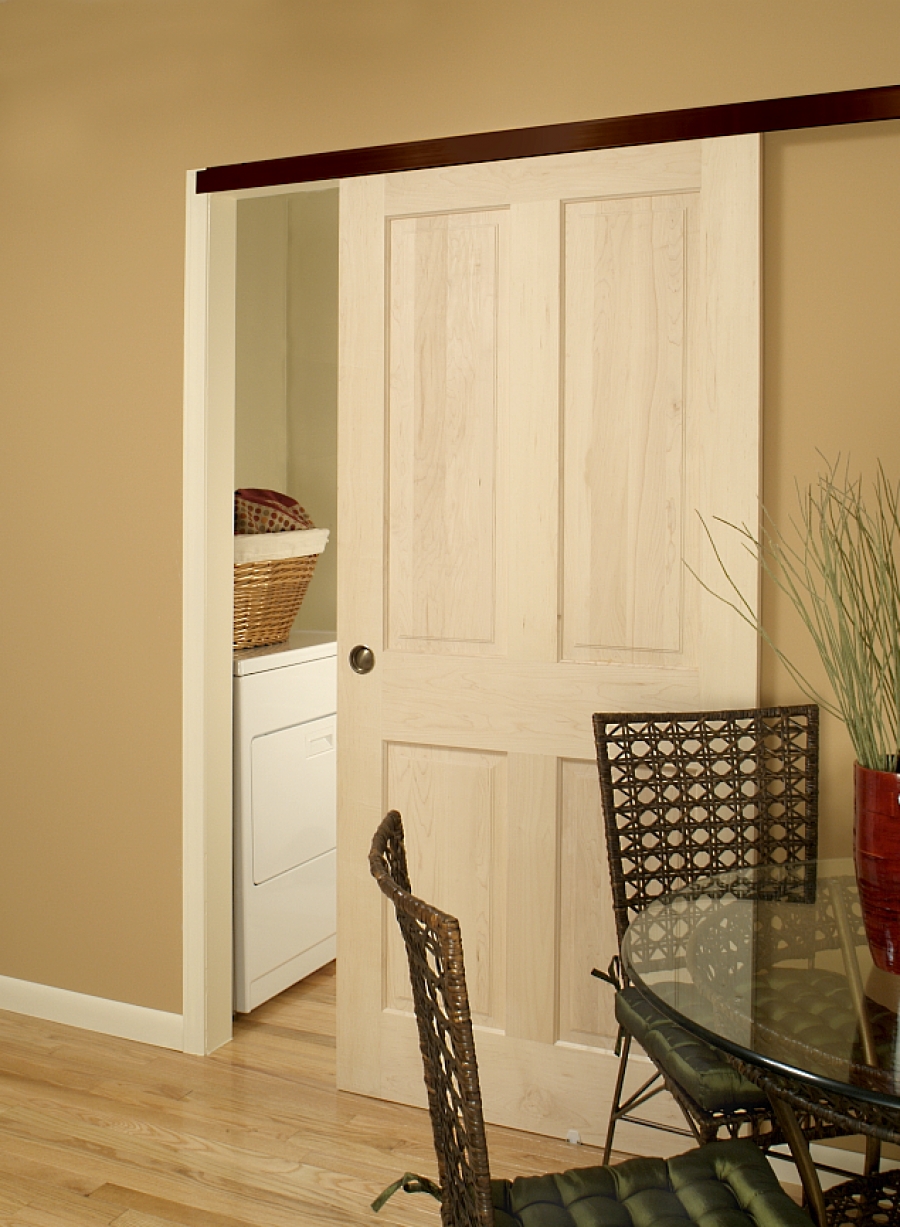Installation Instructions for Pocket Door Frame From Johnson Hardware
Video
Here are some typical questions about space–saving pocket doors and building tips for installing pocket door frames:
 Credit: Johnson Hardware
Credit: Johnson Hardware
How long does it take to install a pocket door? Framing an opening during new construction takes no longer than framing for a swinging door. A retrofit will take longer. If the work is being done by a contractor or an experienced do-it-yourselfer, removing the drywall, old framing and constructing the new rough opening can usually be done in less than a day, provided there is no electrical wiring or plumbing involved. Installing the pocket-door frame and hardware and hanging the door usually takes less than 30 minutes. Johnson Hardware's Universal pocket-door frames have several features which speed installation. Their 2'6" and 3'0" frames are marked for cutting to shorter lengths. They also use easy-to install self-adjusting floor brackets for the studs. Trim kits are also available from Johnson to speed the job.
Are there any disadvantages to pocket doors? Pocket doors require a wider header and it must be located higher in the wall to make room for the door's header/track assembly. The finished wall is not as strong as a 2x4 framed wall and wiring or plumbing cannot be installed in the wall. The studs provided with Johnson's kits are wrapped with metal on three sides for extra strength, and are significantly stronger than the studs provided with some other kits.
How do I remove a pocket door after it's installed? After unscrewing the split head jamb, unlock the tabs that hold the door hangers to the rollers; then remove the door. Some manufacturers, such as Johnson, have tracks that can be removed without tearing out one side of the wall.
Can I convert a swinging door into a pocket door? Yes. After the door is hung, install a pocket-door lock or latch in the existing lock hole. The hinge cutouts will be hidden behind the pocket split jambs.
Building Tips for Pocket Doors
A 32-in. wide swinging door takes over 14 sq. ft. of floor space to swing 180 degrees and it hides more than 16 sq. ft. of wall space when it's open. Substituting a pocket door saves all of the floor space and wall space. Contrary to old-time beliefs, pocket doors are relatively easy to install and they will last a lifetime.
Here are some tips to ensure that a pocket door is installed correctly and will operate flawlessly over the years:
Use hardware that is designed to support the weight of the door you're using. Johnson Hardware's standard kit supports doors that weigh up to 125 pounds. Hardware is also available that will support doors up to 300 pounds.
Don't use a bypass sliding door hardware where you need a pocket door. Nail the track to the framing studs, not to the framing header. If the header sags a bit, it won't bend the track.
Check the door-frame studs to ensure they're straight and not bowed.
Plumb the studs and be careful not to bend them when installing the drywall.
Install the pocket split jambs first, ensure they are both plumb so your door will fit properly in the opening.
Use screws to secure one of the spilt head jambs so it can be removed, if necessary.
Be sure the door is straight and is finished on all sides to prevent warp.
Remind other contractors on the job where the pocket doors are located. (More than one door has been scratched or nailed open.)
Be sure to read and follow the instructions provided with the hardware.
For more information on Johnson Pocket Door Frame Hardware, write to: L.E. Johnson Products, Inc., 2100 Sterling Avenue, Elkhart, IN 46516, call 800-837-5664 or visit our web site at johnsonhardware.com
